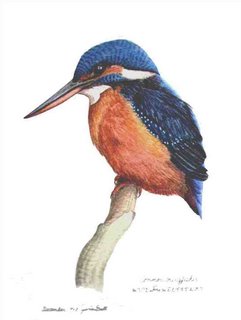RECAP ON A RAINY DAY
RAIN STOPPED PLAY
It being the rainy season I am sitting here knocking out this recap of what has been going on here birdwise. It really is pelting down outside and a few trickles here and there on the inside.
One passage migrant, the Black-capped Kingfisher, stopped on its way north and decided that there was no point in going any further than the Huay Tung Tao lake as it provided all its needs, It stayed for almost exactly 6 months and then disappeared. One of the highlights of the year was the appearance of a solitary Bar-headed Goose in the middle of the lake. Now this is a very rare winter visitor so I decided to check whether anyone was missing one. The two obvious places to check were the Zoo and the Night Safari Park, not only didn’t they have any but they stared at me blankly and asked what sort of creature was it! I then checked the private collections that I knew about and nobody was missing a goose so it has to have been a wild one. It flew away as I was watching it, never to be reported again, to my knowledge.
My friend John Moore the Entomologist and I have found an interesting new road. We came across it being built about 40 odd kilometres out of Chiang Mai on the Doi Sakhet – Chiang Rai road, it starts at a well known Thai restaurant Ka Mu Phuket. It eventually arrives at Chae Sorn National Park (far side) and only the locals who live in 5 or 6 villages along its route use it. It is alive with interesting birds, some of the species listed below. Considering that the habitat along the route is mostly the same, forested, the 163 species of birds listed by us is not bad.
Unintentional humour in the field – I disturbed an adult Slaty-breasted Rail and four chicks. On noticing me the adult bird took off at a run and the four puff-ball chicks, trying to keep up, were tumbling and running and tumbling and running all the way until disappearing into some long grass.
3 species of Buzzards
5 “ “ Cuckoos
9 “ “ Babblers
4 “ “ Barbets
2 “ “ Broadbills
12 “ “ Bulbuls
3 “ “ Forktails
3 “ “ Nuthatches
5 “ “ Owls/Owlets
2 “ “ Pittas
4 “ “ Wagtails
6 “ “ Woodpeckers
and the Green Cochoa


